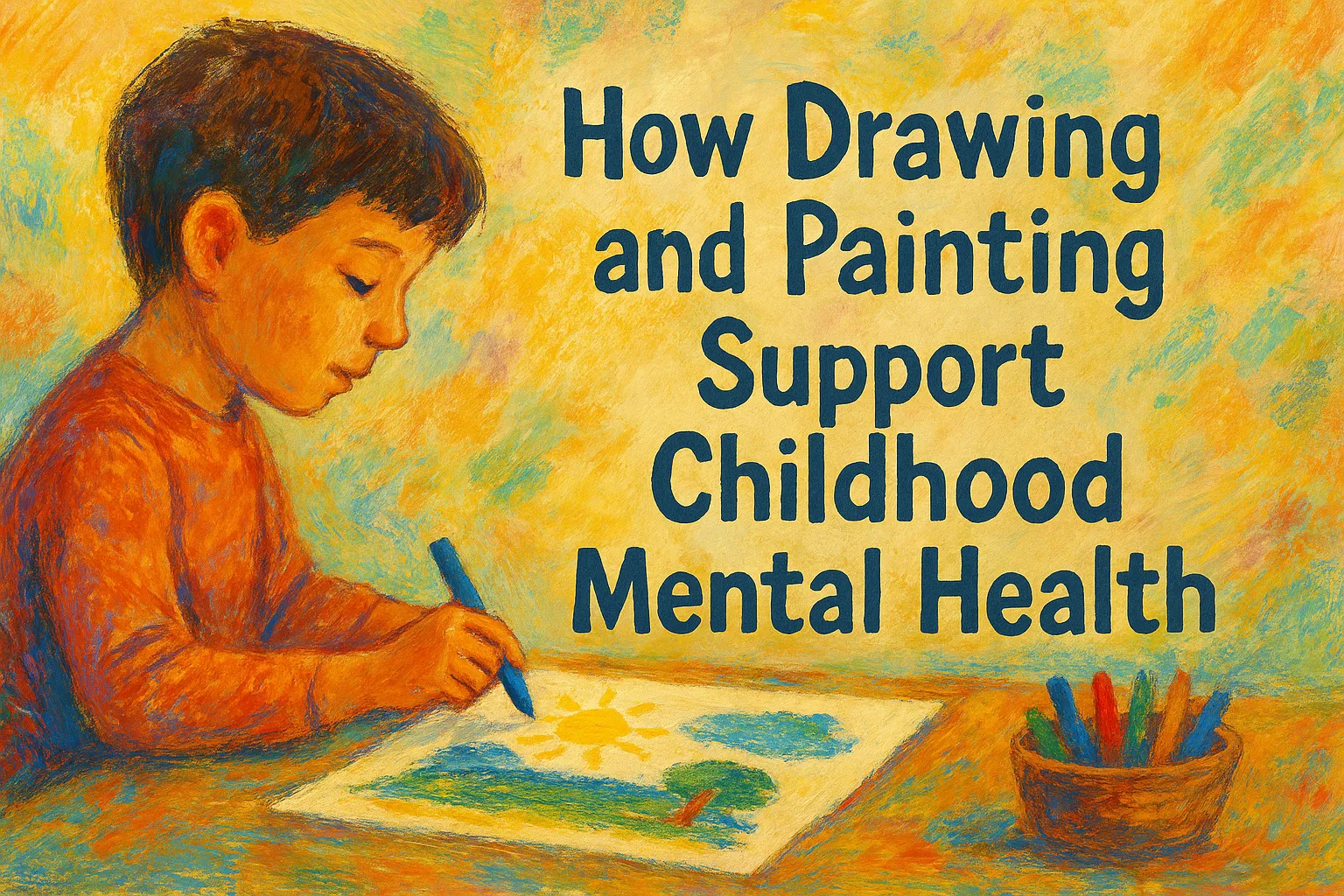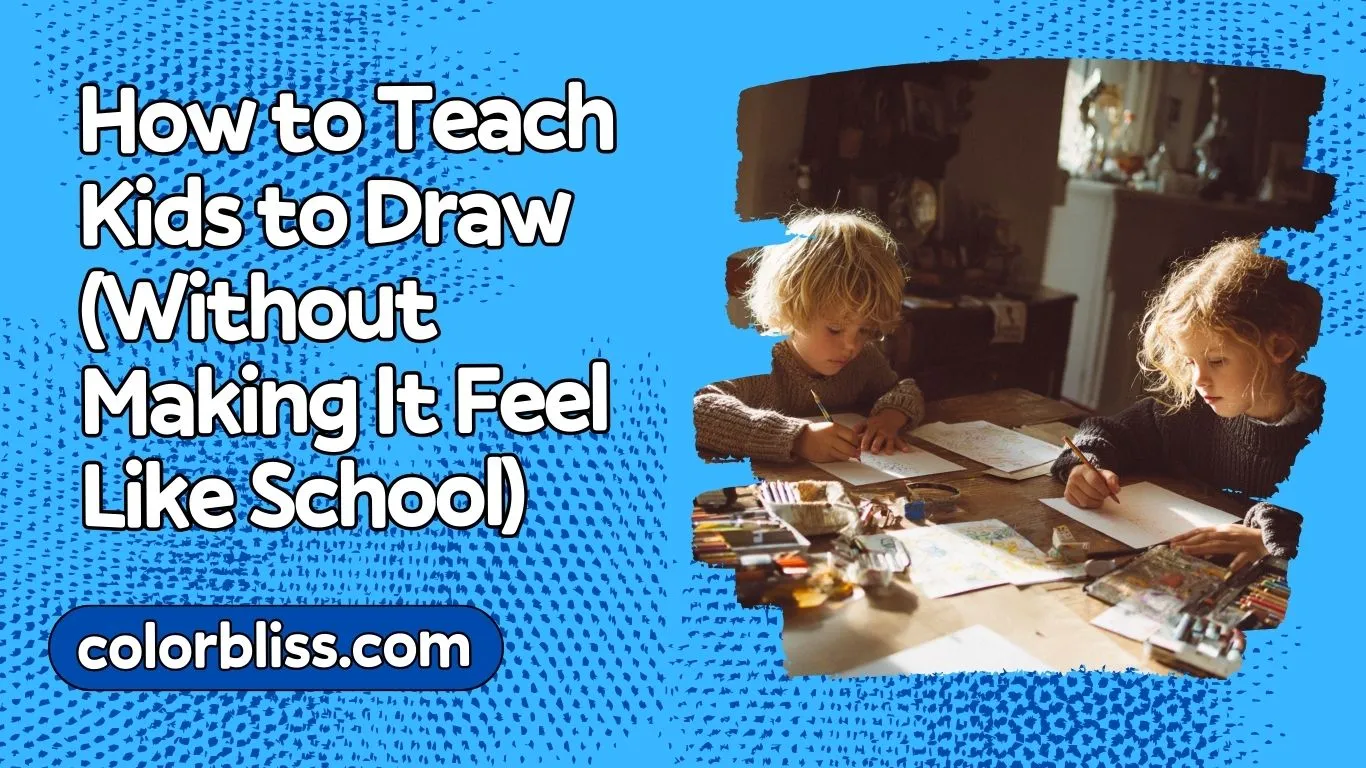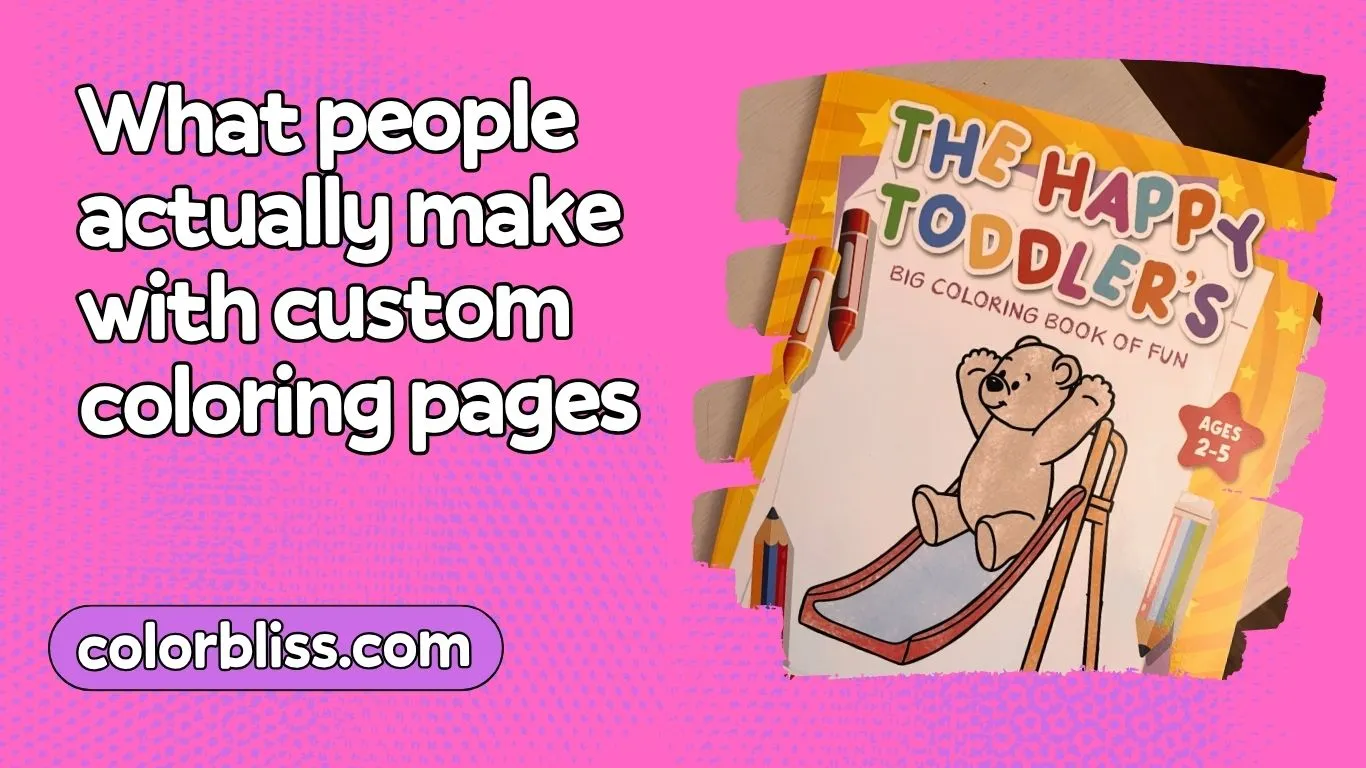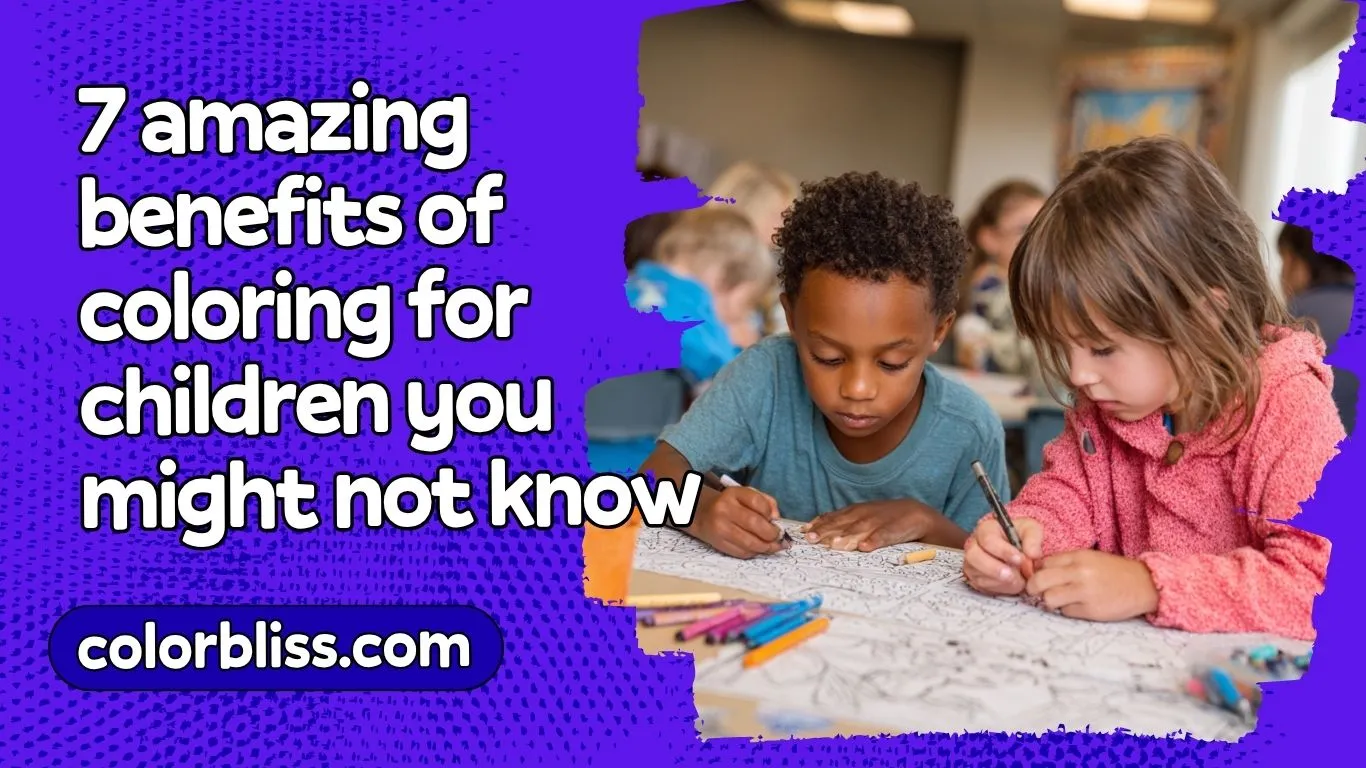How Drawing and Painting Support Childhood Mental Health

Key Takeaways
- Creative expression is a natural and developmentally appropriate outlet for children.
- Drawing and painting can help kids manage anxiety, express feelings, and make sense of their world.
- Art activities build emotional regulation and cognitive flexibility over time.
- Nonverbal expression through art is especially helpful for younger or neurodivergent children.
- Parents and educators can use simple art techniques at home or school to support children’s emotional well-being.
This article was written by Young Sprouts Therapy, a Vaughan-based therapy clinic specializing in therapy for children, teens, and families. Our team of experienced therapists uses evidence-based, developmentally appropriate approaches—including art and play therapy—to support emotional well-being, resilience, and growth.
Why Children Turn to Art to Express Themselves
Before children develop fluent verbal language, they rely heavily on visual and sensory experiences to communicate. Even once they can talk, words often fall short when it comes to complex or confusing emotions. For many children, drawing and painting serve as early tools of self-expression—a way to “speak” about their inner world through shapes, colors, and images.
Children who are feeling overwhelmed, sad, or unsure may not say “I’m anxious,” but they might draw a storm, a tangled mess, or a lonely figure. These creative expressions give important clues into how a child is feeling and can open the door for gentle reflection and support.
What the Research Tells Us About Art and Emotional Development
Studies in child psychology and developmental neuroscience consistently highlight the benefits of visual art for emotional health. Here’s what current research shows:
- Improved emotion regulation: Art-making activates brain regions associated with emotional awareness and executive functioning, helping children stay calm and focused.
- Lowered stress: Engaging with color and creative materials can reduce cortisol levels and promote a sense of safety. These benefits aren’t limited to children – the benefits of coloring extend across all age groups, making it a valuable family activity.
- Strengthened self-esteem: Completing an art project provides a sense of accomplishment and identity formation, particularly important during early and middle childhood.
- Increased communication: Children often become more willing to talk about their artwork, which helps develop narrative and social skills.
These findings are especially relevant for children facing challenges such as family transitions, school stress, or anxiety.
Drawing and Painting as Tools for Processing Emotions
When a child is invited to draw “what their worry looks like” or paint “a place they feel safe,” they are gently guided to explore feelings through metaphor. This symbolic play bypasses the pressure to be logical or precise, offering emotional distance and flexibility.
Parents often notice that when kids are immersed in painting or doodling, they become more relaxed and open. This is because the creative process supports mind-body regulation—slowing the breath, calming the nervous system, and inviting flow.
Simple Art Activities That Support Children’s Emotions at Home
You don’t need a therapy degree or fancy materials to help a child benefit from art. Many of the tools children use in therapy are actually things they already enjoy at home—crayons, markers, paint, scissors, glue. The key difference is the intention behind the activity.
Below are some simple, home-friendly art practices that support emotional awareness, without requiring children to explain themselves in words:
1. Feeling Color Wheel
Give your child a blank circle and a set of colored pencils or paints. Ask them to assign colors to different feelings (e.g., “red for mad, blue for sad”) and color sections of the wheel to show what they’re feeling today. This helps children name emotions in a visual way.
2. Draw Your Day
At the end of the day, invite your child to draw something that made them feel happy, confused, or frustrated. This opens space for reflection and conversation without pressuring them to explain.
3. Create a Safe Place Collage
Using old magazines or colored paper, have your child create a collage of images that represent a place they feel calm or safe. This helps children identify emotional resources they can return to mentally during stressful moments.
4. Emotion Monsters or Worry Creatures
Ask your child to draw a creature that represents their fear or anger. Giving emotions a character helps “externalize” them—meaning the child sees the emotion as something separate from themselves, which is easier to manage.
These activities aren’t about creating “good” art. They’re about making space for children to understand themselves better—something that becomes especially important during developmental leaps or life changes.
When Home Art Isn’t Enough: Recognizing When a Child Needs More Support
While at-home art is a wonderful tool, there are times when deeper, professional support may be helpful. Here are a few signs to watch for:
- Ongoing sleep disruptions, frequent stomach aches, or withdrawal from peers
- Sudden changes in appetite or mood that last more than a few weeks
- Persistent worries, fears, or outbursts that interfere with daily routines
- A traumatic experience or major life transition (e.g., divorce, death, move)
In such cases, working with a trained art therapist provides a structured, evidence-based approach to emotional healing.
To learn more about how professional support works, you can explore child therapy—offered by therapists who specialize in expressive, developmentally attuned care.
Art as a Bridge: Supporting Neurodivergent Children Through Creativity
For many neurodivergent children—including those with autism, ADHD, or sensory processing differences—traditional talk therapy may not feel accessible. These children often process the world in highly visual, sensory, or nonlinear ways. That’s exactly why creative approaches like art therapy can be transformative.
Why Art Therapy Works for Neurodivergent Kids
Neurodivergent children often benefit from:
- Visual processing tools over verbal explanations
- Structured freedom, where they can make choices within predictable routines
- Sensory engagement through texture, color, and movement
- Nonjudgmental expression that honors their unique perspective
Art therapy makes space for all of this. It doesn’t force eye contact or verbal dialogue. Instead, it invites children to show how they feel—through lines, images, and sensory play—on their own terms.
Some children may paint repetitive shapes to self-regulate. Others may use color patterns to express intense emotional states. The therapist’s role is to observe, support, and reflect, gently offering interpretation when appropriate and always centering the child’s experience.
Case Snapshot: A Quiet Story Told in Color
Consider a child with selective mutism or high sensitivity who rarely speaks in class or social settings. Through painting, they begin to use deep blues and stormy greys over time. As trust develops in therapy, brighter colors emerge—perhaps symbolizing emotional shifts. No direct questioning needed. The story tells itself in layers.
This visual storytelling builds confidence and emotional fluency, especially for children who don’t feel comfortable with language-based methods.
A Shared Investment in Children’s Mental Health
When we treat creativity not just as a hobby, but as a tool for self-understanding and emotional repair, we open powerful new doors for children. Whether it happens in a therapy office, a kindergarten classroom, or a backyard painting session, art gives children a way to process, regulate, and feel seen.
For families interested in a more guided, therapeutic approach to creative expression, options like art therapy offer a safe and structured space for that growth to unfold.
A Gentle Next Step
If you’ve noticed your child naturally turns to drawing or painting during tough moments, that instinct may be worth honoring. Whether at home or with a professional, creative expression can offer children a sense of clarity, comfort, and control.
For families exploring deeper support, services like play therapy and integrated child-focused programs are available to meet children exactly where they are—with warmth, flexibility, and creativity at the core.




